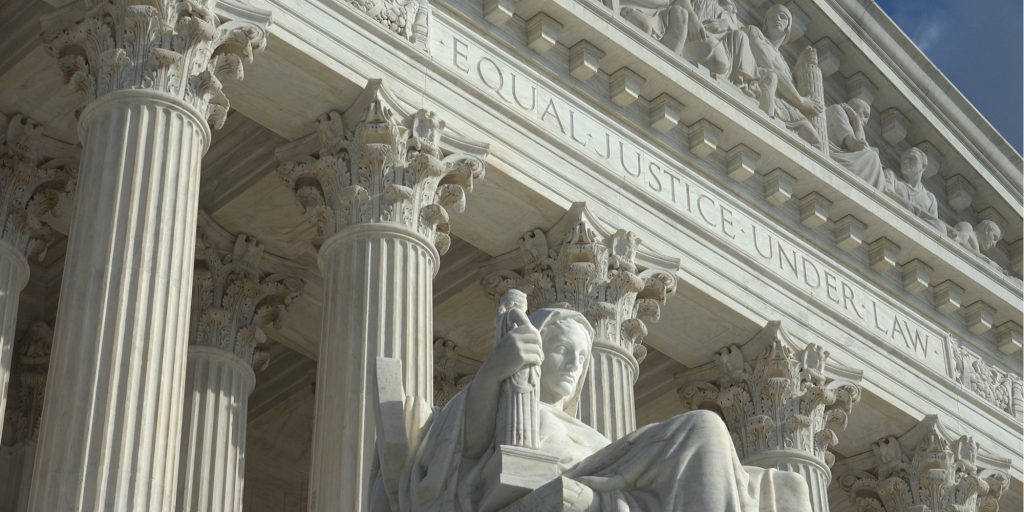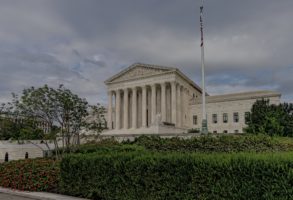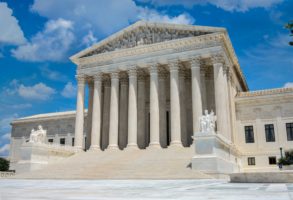
Published May 20, 2021
On May 17, the United States Supreme Court reconsidered a prior precedent that for nearly six decades shamefully denied the equal protection of the law to an entire segment of the human family. The year was 1954, the case was Brown v. Board of Education and the precedent overruled was Plessy v. Ferguson (1896), which for 58 years had allowed states to engage in “separate but equal” discrimination on the basis of race.
On May 17, 2021, the Court agreed to hear a dispute regarding a younger line of precedents—namely, Roe v. Wade (1973) and Planned Parenthood v. Casey (1992)—that has for many decades forbidden states from extending the basic, fair and equal protection of the law to every member of the human family, born and unborn. By granting certiorari in Dobbs v. Jackson Women’s Health Organization and agreeing to answer directly “whether all pre-viability restrictions on abortion are unconstitutional,” the Court has the opportunity to finally end its failed and constitutionally unjustified experiment as the nation’s de facto abortion regulatory agency of last resort. The justices should emulate the courage of their predecessors in Brown, restore the Court to its proper role as faithful interpreter of the Constitution and begin to repair the vast damage caused by Roe and Casey.
First, the right to abortion has no grounding in the text or history of the United States Constitution or the American legal tradition. The Court in Roe and Casey tried to locate the right to abortion in the Due Process Clause of the 14th Amendment, which provides that no person shall be deprived of life, liberty or property without due process of law. The 14th Amendment was ratified in 1868 in order to provide fairness and the equal protection of the law to persons who had previously and disgracefully been denied these rights in America. At the time, abortion was illegal nearly everywhere, and no one imagined that the Amendment nullified the authority of states to protect unborn children.
That is, until roughly 100 years later, when the Supreme Court in Roe announced that the procedural safeguards of the 14th Amendment created a substantive right to privacy that included a fundamental right to abortion, thus strictly limiting state authority to regulate the procedure according to a complex (and entirely fabricated) trimester-based framework.
Later, the Court in Casey significantly modified the rule and rationale of Roe, but to date it has still refused to uphold the constitutionality of any restriction on abortion as such. Instead, the Court has permitted only very minor side constraints, such as informed consent, waiting periods, mandatory parental involvement and bans on particularly grisly and controversial procedures (e.g., “partial-birth abortion“). Accordingly, the United States has one of the most permissive legal regimes for abortion in the world—we are one of only seven nations that permits elective abortions after 20 weeks’ gestation.
States remain confused about the scope of their authority, given the muddled state of abortion jurisprudence, and any restriction on abortion becomes tied up in years-long litigation before it receives an ultimate answer from the Supreme Court.
Second, Roe and Casey have been corrosive of the rule of law, blurring the distinction between interpreting and making law, and confounding the roles of judge and legislator. It has badly damaged our politics, transforming every presidential and Senate election, along with every judicial confirmation hearing, into a zero-sum battle for control of the Supreme Court. And the Roe/Casey jurisprudence has recently been applied to preclude the adoption of even very modest and popular restrictions on abortion, such as the law at issue in Dobbs, which bans abortions after 15 weeks. Indeed, a recent poll suggested majority support for abortion bans starting at six-weeks’ gestation.
Finally, the human toll of America’s abortion jurisprudence has been staggering. Since 1973, there have been approximately 62 million abortions—more than the combined populations of California and New York. These abortions have disproportionately been performed on the poor and women of color. In the Bronx, for example, more than 50 percent of pregnancies end in abortion. The jurisprudence of abortion pits mothers against children in a narrative of conflict among atomized strangers fighting over a woman’s bodily resources and future. It fails to capture the full lived complexity of the human context and cuts off avenues of care and support for both mother and child, leaving them isolated and alone in their strife and need.
It is long past time for the Supreme Court to right this grievous wrong. The justices in Brown did not flinch in the face of withering political criticism and the assertions by some that reversing Plessy would disrupt entire educational systems that relied on segregation. Today’s justices should do likewise and keep faith with their oaths to impartially interpret the Constitution by overturning Roe and Casey.
O. Carter Snead, professor of law and director of the de Nicola Center for Ethics and Culture at the University of Notre Dame, is author of What It Means to be Human: The Case for the Body in Public Bioethics (Harvard U. Press 2020), chosen by The Wall Street Journal as one of the “Ten Best Books of 2020.”








